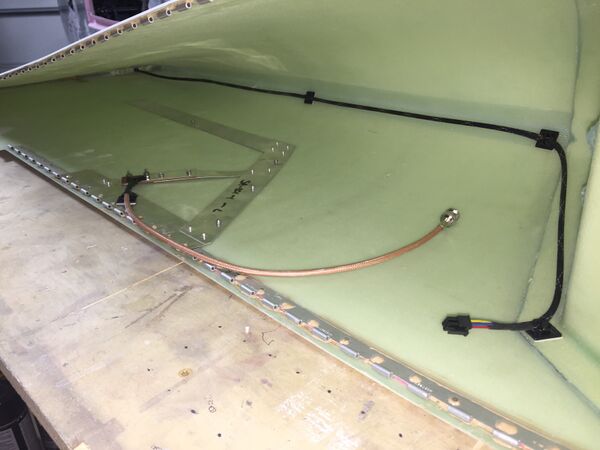Antennas: Difference between revisions
Jump to navigation
Jump to search
m (→Antennas) |
m (→Antennas) |
||
| Line 31: | Line 31: | ||
|VHF bottom antenna | |VHF bottom antenna | ||
(works well when airborne but not necessarily on ground) | (works well when airborne but not necessarily on ground) | ||
|Comant | |Comant CI-E22 (experimental version of CI-122)<br>[[File:Bottom vhf.png|120px]] | ||
|+ | |+ | ||
|MB antenna||Rami AV-64 | |MB antenna||Rami AV-64 | ||
Revision as of 05:20, 6 July 2022
Mounting Instructions
- EAA Videos
- Doubler Plates
Antennas
Example of Bob Archer NAV / Glideslope Antenna mounted in aftermarket Aveo ZipTip.
Frequency plot of Bob Archer antenna (shows 50 Ohm and resonance in the VOR/LOC frequency range of 108-118 MHz):
ELT Antenna Placement
- ELT antenna installation is governed by 14 CFR § 91.207 and AC 91-44A: It asks for:
- "Proper installation" (which means you need to follow the installation instruction from the ELT manufacturer)
- "The presence of a sufficient signal radiated from its antenna" (annual test).
- The antenna to be vertically mounted
- You may install the antenna inside the airplane if
- The airplane skin is non conductive (the RV-10 fiberglass canopy area should be fine) or the antenna is centered behind a window of at least 12 x 12 inch size
- You provide a ground plane for it (24 inches radius for 121 MHz!)




